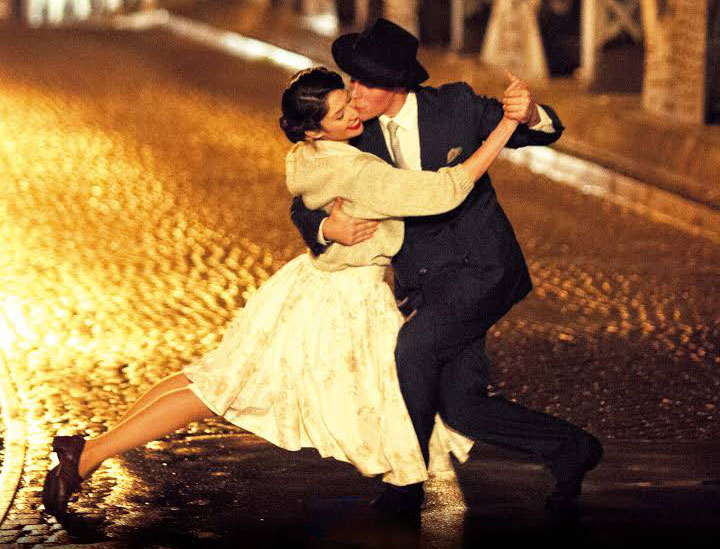In “Our Last Tango” (Uno tango más) María Nieves Rego, the legendary Tango partner of Juan Carlos Copes, tells her own story.
The documentary is by German Kral (2015). Wim Wenders is Executive Producer.
About Our Last Tango
“Our Last Tango” offers a nostalgic look back at the history of Argentine Tango on the stage. The story is told through the personal story of an artist who was there every step of the way.
María Nieves Rego reminisces about Tango and her stormy relationship with Juan Carlos Copes. She begins with Club Atlético Atlanta where they started dancing as teenagers in the Villa Crespo neighborhood of Buenos Aires.
The two danced for almost 50 years through periods of intense connection and separation. María’s bitterness is fueled by Copes’ endless personal and professional infidelities, and the fact that he had children with another woman, but not her. The mother of Copes’ children finally ended the Copes / Nieves partnership.
There were times when the two would perform together, but not talk to each other. Though they eventually split badly, the two share a life bond and the love of Tango. Nieves shares her memories with a group of young Tango dancers who recreate moments in the star’s lives.
Melina Brufman is in the story. Today, Melina is the artist you study with if you want to learn the theatrical part of Stage Tango. Pablo Verón plays the middle-aged Copes. Verón was part of the original cast of “Tango Argentino” and is arguably the world’s most famous Tango dancer. Johana Copes also appears. Copes’ daughter is the top Tango promoter in Buenos Aires today.
If you have danced Tango in the outskirts of Buenos Aires or been part of a Tango couple across the years, you can’t help but see a little bit of yourself in “Our Last Tango.”
The Backstory of Copes and Nieves
Juan Carlos Copes is a towering figure in Argentine Tango. He is the father of the Tango show. During his creative period, Nieves was his dance partner. She is basically the mother of the Tango show.
Before Copes and Nieves, Tango was a folkloric social dance of Buenos Aires and Montevideo. From at least the 1930s until 1955, dancing Tango was how a young man met a young woman in Buenos Aires. That made Tango an important part of the life of the city and its surrounding neighborhoods.
Copes and Nieves started working in 1955, just when the Argentine military ended the Perón regime and banned Tango. Juan and Eva Perón had championed the dance and used it in their propaganda. The military decided that people getting together in the middle of the night must be Perónists plotting against the government.
Dancing Tango in nightclubs was effectively banned by the prosecution of club owners for allowing underage drinking. Tango only survived in secret and in the neighborhoods outside of Buenos Aires.
Somehow Copes kept the Tango show alive. By 1956 he had put together a show starring himself and Nieves. They toured Europe and the United States. In Argentina Copes was still able to produce shows. Apparently he put military people on one side of the hall and Tango people on the other.
When Argentina’s military dictatorship fell in 1983, Copes choreographed “Tango Argentino,” and debuted the show in Paris. It was an immediate hit and started the worldwide Tango Renaissance.
“Tango Argentino” came to Broadway the next year. The show seeded Tango in the United States through the New York dance studio DanceSport. Today, Tango is popular almost everywhere in the world. That wouldn’t have happened without “Tango Argentino” and its stars Copes and Nieves.

